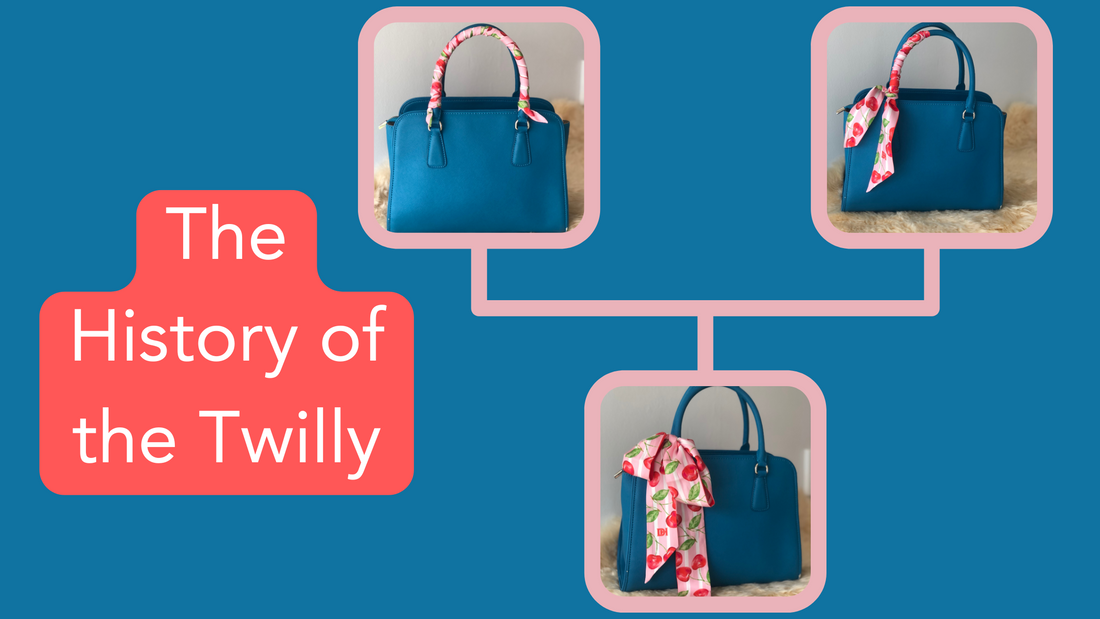
The History of the Twilly: A Small Scarf with a Big Story
The twilly, a slim silk scarf that has become a favourite for handbag lovers, is one of the most versatile accessories in the fashion world. Its compact size belies its impact, with endless ways to wear and enjoy it. But where did it come from, and how did it become such a coveted piece?
The name “twilly” is derived from the word twill, a weave characterised by its fine diagonal ribbing. This weaving technique produces a silk that is both soft and durable, giving the scarf its signature texture and luxurious feel.
Hermès, the French fashion house renowned for its craftsmanship was the first to bring the twilly into the spotlight. The brand had already revolutionised accessories with its carré scarf in 1937, but decades later it reimagined silk in a narrower format, perfect for tying, twisting, and experimenting with new styles.
The official debut of the Hermès twilly came in the early 2000s and although it was designed to be worn around the neck, in the hair, or even on the wrist, customers quickly discovered another use: wrapping them around handbag handles. Not only did this protect delicate leather from oils and wear, but it also gave bags a fresh, personalised touch. This consumer-led styling idea soon became one of the twilly’s most recognisable roles.
While the “classic” Hermès twilly typically measures about 5 cm by 85 cm, other brands have since explored their own interpretations of this much-loved accessory.
Here in New Zealand, Dark Hampton has become well known for its beautifully designed twillies. The brand, founded with a focus on creating timeless, versatile accessories, produces pieces that are designed in New Zealand and crafted from 100% mulberry silk. Mulberry silk is prized for its smoothness, lustre and strength, making it a perfect choice for a twilly that will be tied, wrapped and worn in different ways.
Dark Hampton is also celebrated for its thoughtful, contemporary prints. While Hermès twillies are steeped in equestrian and heritage motifs, Dark Hampton offers designs that reflect modern artistry, often with vibrant colour palettes and playful patterns that appeal to handbag lovers who want something distinctive and fresh.
The charm of the twilly lies in its versatility. It can be tied into a bow on a handbag, worn as a bracelet, used as a headband, or styled around the neck for a subtle accent of colour. Its small size makes it easy to collect, with endless patterns and seasonal designs that allow wearers to express personality without overwhelming an outfit.
From Hermès to Dark Hampton, the twilly has proven itself as more than a scarf, it is a symbol of playful luxury. It takes the heritage of silk and reinvents it for the modern wardrobe, proving that sometimes the smallest accessories leave the biggest impression.
How to Wear a Twilly
If you’re new to twillies or just want to get more from yours, here are a few simple ways to style them:
- On your handbag: Wrap around the handles for protection and a pop of colour.
- As a bow: Tie one onto the side of your bag for a chic finishing touch.
- In your hair: Use as a headband, braid accessory, or ponytail tie.
- On your wrist: Wrap it around like a silk bracelet for an effortless detail.
